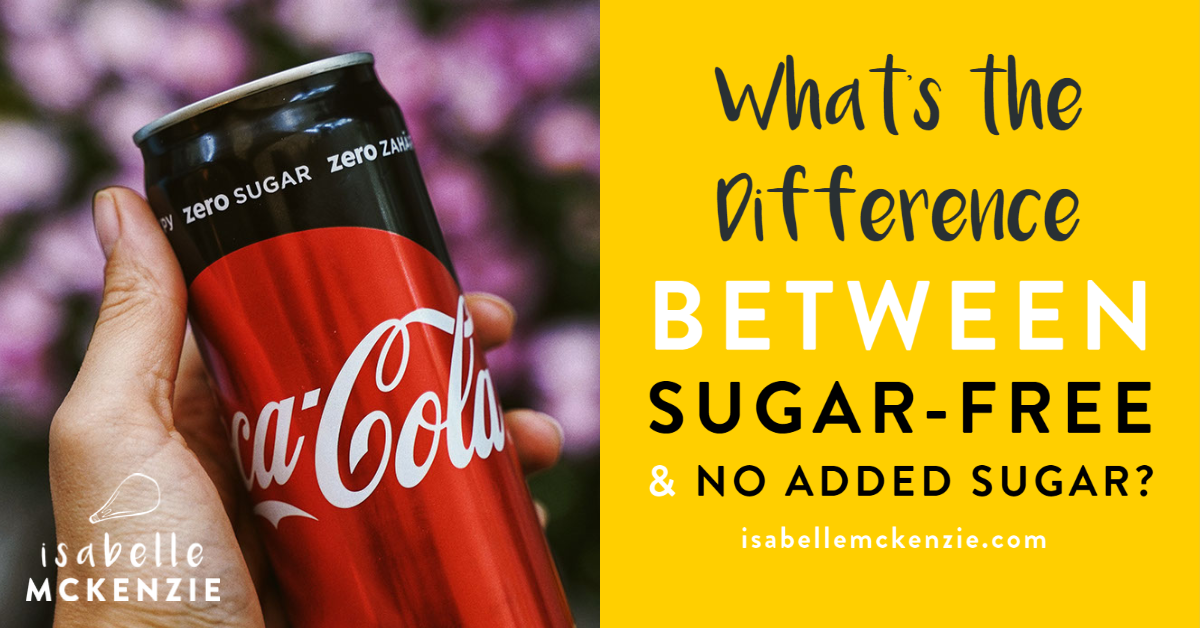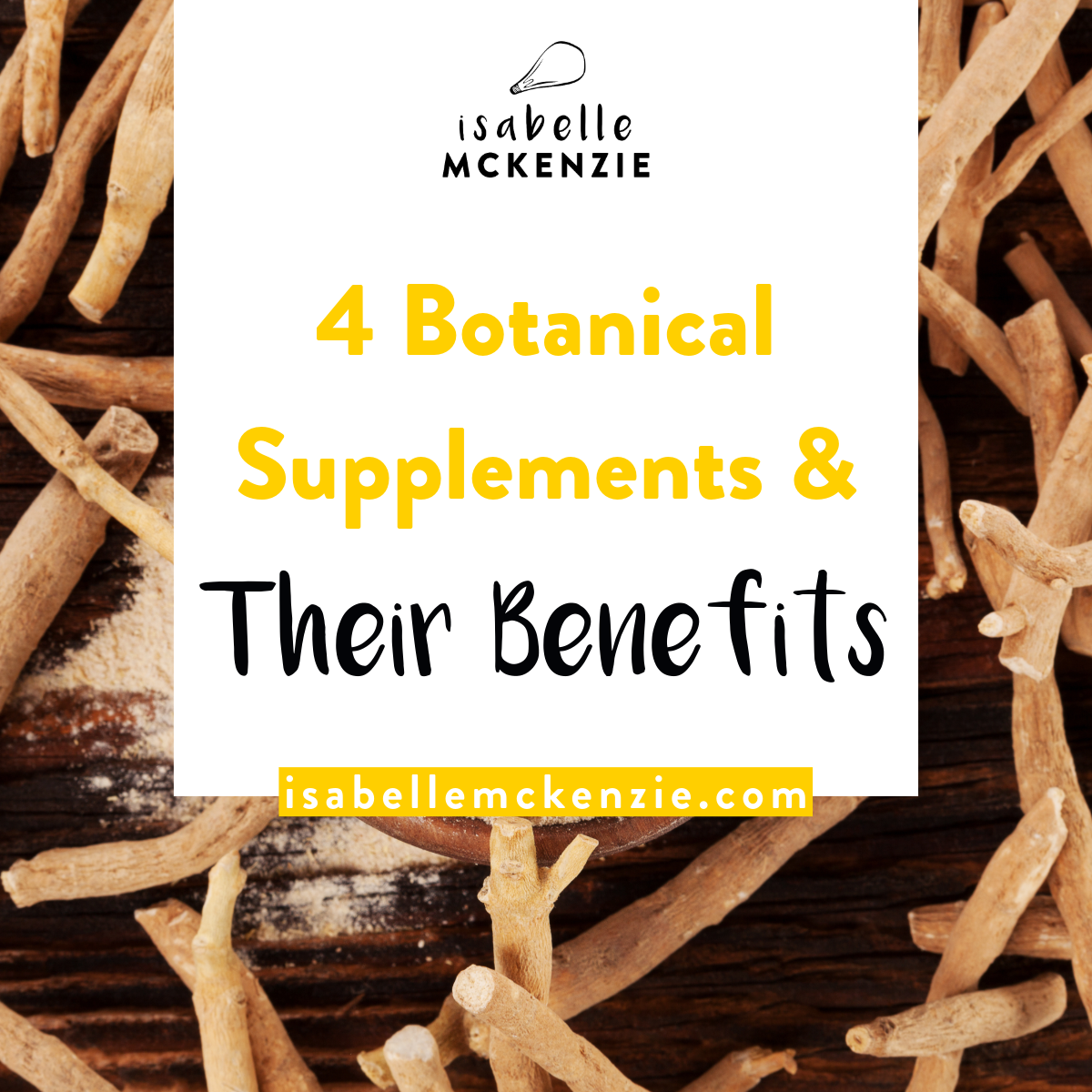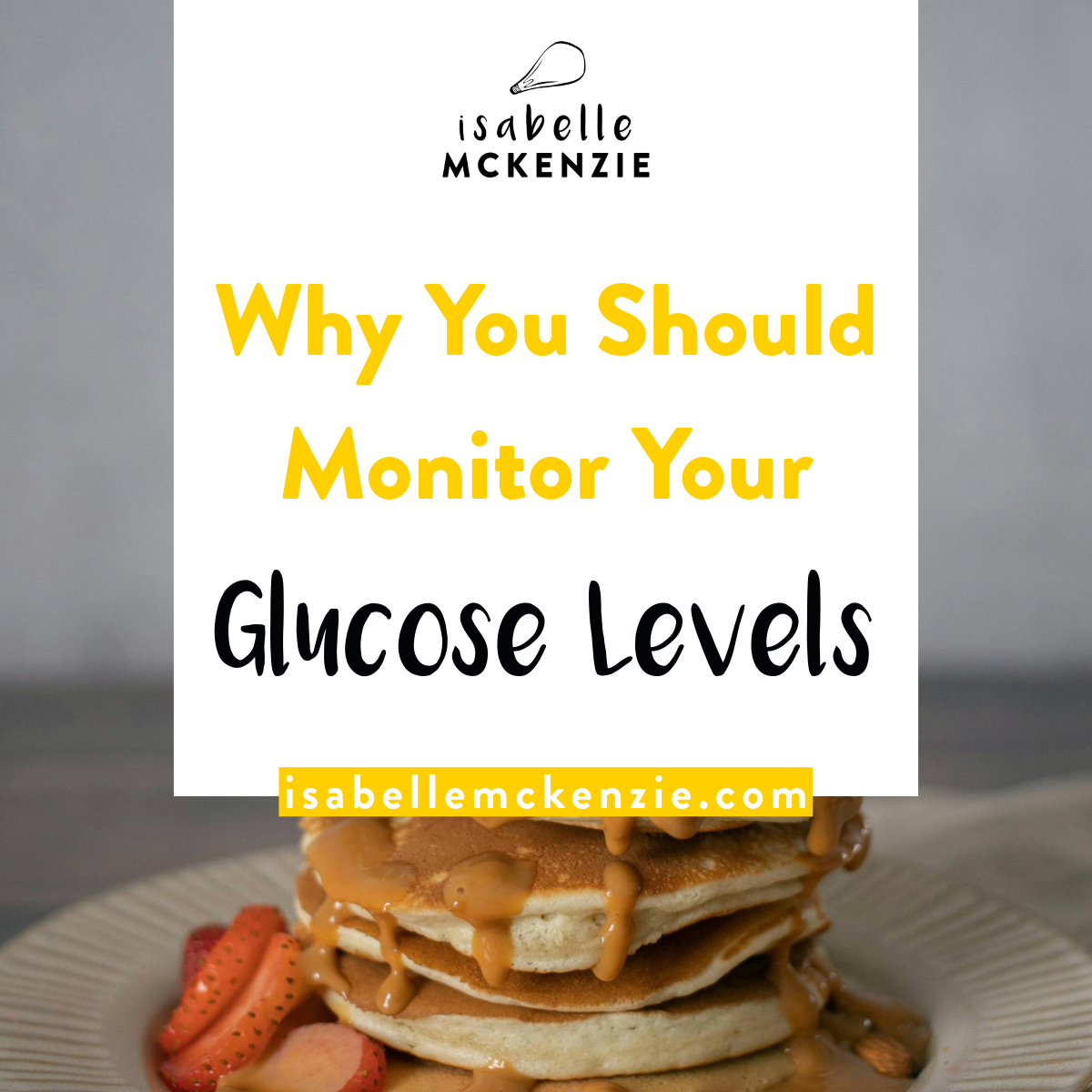What’s the Difference Between Sugar Free and No Added Sugar?
#SugarBalancedLiving
Have you ever struggled to make sense of suspect or just plain confusing sugar claims on packaging when trying to shop with nutrition in mind? What’s the difference between sugar-free, low-sugar, unsweetened, and no sugar added? Yes? Well you’re not alone! Here’s how you can decode the labels and avoid sneaky hidden sugars!
You’ve made it your goal to cut your sugar consumption, and that’s a really good choice for your health! High sugar consumption is a large problem affecting many people. In fact, your average American will eat about 17 teaspoons of added sugar a day, and that’s not even including the sugars that occur naturally in foods like fruit or dairy. This is around double the recommended intake for men and triple the intake limit for women. For children, the max sugar intake per day should only be three teaspoons of added sugar at most.
And the thing is, it’s not just because we all have a nasty sweet tooth and can’t ditch candy, sodas, and cookies.
Even if you think you’re a healthy eater most of the time – minus your slice of occasional slice of party cake and caramel popcorn on movie night (of course an occasional treat every once in a while is totally fine), the fact is sugar is often hidden in so many forms and unsuspecting products at the grocery store.
Sugar can be hiding in everything from glazed meat, and salad dressing, to pasta sauce – never assume any food has no sugar just because it doesn't taste sweet. Sugar lurks literally everywhere and not just in the obvious places like chips and cookies.
Sugar is even hiding in some so-called ‘nutritious’ go-to healthy foods:
– like granola and even something as simple as vitamin water – which is full of a whopping 32 grams of sugar, all condensed into one 20 oz. bottle.
It’s no wonder an average American consumes more than 17 teaspoon’s of sugar daily, which is three times as much added sugar as what’s recommended. I think we can certainly cut back.
However even now you’ve made the choice to cut back on blood sugar spiking addictive sugar, it can be confusing just to navigate the so-called healthy labels when you see different labelled names like “unsweetened” “no sugar added,” and “sugar-free.”
What’s the difference, and which is the healthiest choice?
Well, today, we’re going to bust some label myths, break down the common types of sugar, and decode those labels, making it a breeze when looking to avoid sugar while grocery shopping and help you better understand nutrition labels and ingredient lists. Let’s finally understand what that food label reading “sugar-free” means!
The Difference Between Sugar-Free, No Added Sugar, and Unsweetened
For sugar-conscious shoppers, distinguishing food label claims such as “sugar-free”, “no added sugar”, and “unsweetened” is downright stressful.
You may be wondering how to make sense of it all. Are these products healthier? Which one is better? Does "sugar-free" mean there’s no sugar at all?
Yes, there's a difference between sugar-free, no added sugar, and unsweetened.
Wait... but which one is better for you?
The answer: it’s a tad bit complicated. But luckily I’m here to break it down for you.
First off, sugar isn’t necessarily all bad for you—it’s the form and type that we consume that is most detrimental to our health. In order to understand what we should be looking out for, we first need to get to know sugar a little better.
What Is Sugar?
“Sugar” is a term which has become vague and seems to encompass many different sugary things, from fruit to cupcakes.
People will sometimes make distinctions between natural sugar like that found in fruit and honey, which we’re told is an okay sugar to eat, and refined sugars such as table sugar and corn syrup, which we’re told to avoid. However, that’s not the complete truth. Let’s get a little more specific.
Sugar is the generic name for sweet-tasting, soluble carbohydrates. Sugar is actually carbohydrate and not a food group.
Most carbs that we consume are either metabolized into glucose or are left undigested, serving as dietary fiber.
Firstly, there are different types of sugars which occur naturally:
Fructose found in fruits
Lactose found in milk and dairy products
Glucose (your body's main source of energy) found in fruits, veggies, rice, etc.
And then there is sucrose, also called table sugar which is normally refined sugar or a sweetener.
In a natural whole form like in whole grains or veggies, sugar is energy for your brain, muscles and organs – which all need that glucose to function. The best form of this energy is from fruits, vegetables and complex carbohydrates that have fiber, vitamins and other minerals our bodies need. The fiber helps you metabolize the sugar, easing the effects sugar had on your blood sugar levels and insulin.
You see, the problem with ‘sugar’ starts when it’s consumed via non-whole foods sources.
An important observation to note here is that whether it’s a Hershey’s bar, white sugar, honey, agave, or corn syrup, our bodies can’t inherently distinguish between the natural sugars and the processed sugars, especially since they lack natural whole food fiber, which would slow down the digestion of sugar and help balance the blood sugar level spikes.
Now, this doesn't mean you shouldn’t still be slightly careful with whole foods’ sugar content. For example, fruit; you can’t just rely on its fiber.
Fruit has sugar in it, way more sugar than other whole foods (with some fruits having more than sugar than others), and that sugar found in fruit can still have the same blood-sugar-spiking effect if eaten in excess.
The subject of how much sugar you should be eating from fruit, and what makes sugar in fruit different from refined sugar is quite a big subject. There are many variables, and it all depends on how healthy you are and what your goal is, so I've written a whole blog post on it over here. Make sure you check it out to get all the details.
What’s in A Label?
Fantastic, with our new clearer image of what exactly ‘SUGAR’ is we can now investigate those ever so confusing sugar content claims on labels. Just because a product has a sugar content claim doesn’t at all mean it’s good for you.
According to the Food and Drug Administration, the nutrient content claims describe the level of a nutrient or dietary substance (such as sugar) in the product, using terms such as “free”, “high”, and “low”, or they compare the level of a nutrient in a food to that of another food, using terms such as “more”, “reduced”, and “lite”.
The FDA requires that a nutrient content claim on a food package be based on how much of the food most people usually eat or drink. This is called the reference amount or serving size.
Always check the label, because sometimes serving size and reference amount are different. For example, a serving size of a low sugar soda may be 8 oz., but the low sugar claim on the label is based on a reference amount of 4 oz.
For example, a so-called healthier breakfast cereal can claim it’s only “lightly sweetened” which is actually just a meaningless, unregulated term, that can fool us health-conscious shoppers into thinking it’s a better choice.
Another thing to take note of is that products with sugar claims often contain a sugar substitute or sweetener. This is how they can contain less sugar but maintain that sweetness you usually expect.
The sweeteners that many companies use in place of sugar can have so many negatives effects on your health and… maybe you think that it's helping you destroy those sugary cravings for whipped cream and candy, this next one might just be the reason to get you to stop using them.
When you consume a product that contains those alternatives, like let’s say aspartame or sucralose, it's actually just tricking your mind into thinking that you consumed something SUPER, SUPER SWEET, way sweeter than even SUGAR.
You guessed it: this only makes your brain crave foods and beverages that are even sweeter.
Also, some so called ‘no sugar added’ processed foods often include excessive amounts of sugar alcohol, and naturally occurring sugar.
Researchers found in a study that when participants drank diet or ‘sugar-free’ drinks, they consumed around 48 more calories from HIGH-CALORIE and NON-NUTRITIOUS foods like pastries and fries, compared with the days when they did not drink diet beverages.
This kind of defeats the point, right?
One 2019 study found that women who consume a lot of artificial sweeteners have a higher risk of stroke. Other research on animals have shown a link between artificial-sweetener intake and obesity and diabetes.
And you know what is the craziest part about labelling before 2016 it was almost impossible to tell how much sugar was naturally occurring (like from milk, etc.) vs. added sugar.
In 2016, the FDA finally revised the Nutrition Facts label to list both “Total Sugars” and “Added Sugars.” With full changes having only started to appear on new label formats in 2020.
But what about other types of sugar content claims, such as “no added sugar”, “free”, and, “unsweetened” that pop off the front of those ‘healthily appealing’ packages?
Well, these label terms can actually be helpful, but only if you understand what they really mean. So let’s take a look at your common labelling terms and break it down.
1. Sugar-Free
Sugar-free is a labelled term regulated by the FDA. According to the FDA a food or drink can be labelled as “sugar-free” (sugarless, no sugar, free of sugar, zero sugar, or trivial source of sugar) if it contains less than 0.5 grams of sugar (both natural and added) per serving size as indicated on the label.
This will include sugars from added sugars, like honey, coconut sugar, etc., as well as naturally occurring sugars found in foods like as fruit or milk.
It’s important to note the actual number of servings in the food because although insignificant in small quantities if you’re eating or drinking multiple servings of a sugar-free food or drink, which you most likely will since 0.5 grams is likely for a single portion and can easily add up, so you might find yourself unintentionally adding sugar to your diet.
Furthermore, while sugar-free includes naturally occurring and added sugars, the term doesn’t include artificial sweeteners or sugar alcohols, which are usually both ‘sweeteners’ I like to avoid.
Yes, artificial sweeteners are not treated the same in the body as table sugar, but as I mentioned earlier most ‘artificial sweeteners’ and ‘sugar alcohols’ can actually raise your blood sugar levels and can affect the composition of your gut microbiome.
Check the ingredient list for common artificial sweeteners or sugar alcohols like aspartame, saccharin and sucralose.
2. No Added Sugar
U.S. Food and Drug Administration permits a food label to claim “no added sugar” (without added sugar or no sugar added) if there are no sugars added during the processing or packing, including ingredients that contain sugar like juice, dry fruit, fruit, etc.
Basically, as long as sugar isn’t added to the food manually, it can be labelled with this claim. This term is not the same as sugar-free, since naturally occurring sugars, artificial sugars, and sugar alcohols may still be present.
For example, a ‘no added sugar’ ice cream can’t be sugar-free since it does contain naturally occurring ‘milk sugar’ lactose, it so cannot claim to be “sugar-free”.
As I mentioned earlier naturally-occurring sugars are not necessarily harmful, but in large quantities are difficult for the body to break down and, unfortunately, are usually processed similarly in the body to table sugar, depending on the source.
What’s more, we still need to be wary of “no sugar added” foods and drinks containing sugar alcohols, such as diet sweeteners like sorbitol or xylitol.
3. Unsweetened
What does it mean when a food label reads “unsweetened?”
According to the FDA products that're labelled as ‘unsweetened’ or ‘contain no added sweeteners’ contain no added sugars, artificial sweeteners, and sugar alcohols whatsoever. However, they do contain naturally occurring sugars.
I would say that if you're buying packaged foods while looking to avoid artificial sugars and reduce the amount of added sugar in your diet, ‘unsweetened’ foods are your best choice. You can always add a bit of a natural sweetener like pure stevia or 100% monk fruit – or so whole food and sweeten naturally with some fruit – to add a bit more sweetness without all the extra calories and sugars.
How to Make Smart Healthier Choices
My favorite of the labelling options I would recommend is ‘unsweetened’ because you’re not taking in any added sugars or artificial sweetener. Looking for ‘no added sugar’ on the label is also one of the better options, as long as you're aware of how to make sure that there is no artificial sugar that may be in the product instead.
I don’t like to advise people to look for ‘sugar-free’ foods and drinks because it can just get too dang confusing.
After taking this new information into consideration – whether you’ve decided to opt for sugar-free, unsweetened, or no added sugar, it's important to always scan and analyze the ingredient label, and fully consider the full nutrition of the product.
If your diet currently includes large amounts of sweets, candies, sodas, white breads, etc., then it is crucial that you find replacement products with zero to no sugar, to help you start cutting back, start improving your health, and avoid the ‘many’ dangers of over-consumption including diabetes, obesity, and, many inflammatory diseases even cancer.
When you see a sugar content claim, don’t be afraid to use the ingredients list and Nutrition Facts label to make sure you’re making the healthiest choice.
While in general, I do believe that unsweetened foods and drinks are usually the better options, getting your sweetness from natural whole food form - nutrient-laden fruits and vegetables - is the best ideal choice. It is essential to build an overall diet set on a healthy eating pattern full of plenty of water and nutritious foods like whole grains, veggies, lean protein and healthy fats.
You can also set yourself up a super repository of healthy no sugar recipes that minimize sugar content, relying on only natural sources of sugar, while remaining delicious, by Checking Out My Latest Sugar-Free Recipes.
Well, that’s it from me! Congrats on learning to decode these sugar claims, and taking one big toward living a cleaner and happier lifestyle, free from the dangers of over-consuming sugar.
Added sugars aren't a necessary nutrient in your diet, and they can cause serious harm if eaten in large amounts on a regular basis.
Whether you’re headed out to eat or simply grocery shopping, it’s good to check the labels of what you buy and carefully pay attention to the food you’re eating – even the savory.
And since I’m totally here to help you the best I can… for even more effective and actionable support, I’ve put together some seriously useful and easy hacks on cutting back sugar and junk foods for good.
Check out my FREE ‘Ultimate Guide to Crushing Your Sugar Cravings’ Downloadable Guide.
Get started on effortlessly breaking your sugar reliance/addiction for good with help + support. AND, most importantly, while maintaining a healthy balance between your mind and your body - because low-sugar living shouldn’t feel like deprivation.














… yup, the Isabelle behind the IsabelleMcKenzie.com!
Instagram: @ItsIsabelleM | Pinterest: @ItsIsabelleM | Subscribe on Youtube
I’m dedicated to helping teach people how to live their happiest, healthiest life and reach their goals so that they can create the lifestyle of their dreams with integrity & purpose.
I focus on self-care, mind, body and health, dedicated to helping teach peeps how to live their happiest, healthiest life and reach their goals so that they can create the life that will have them jumping out of their bed in the morning to actually live!
Read More >